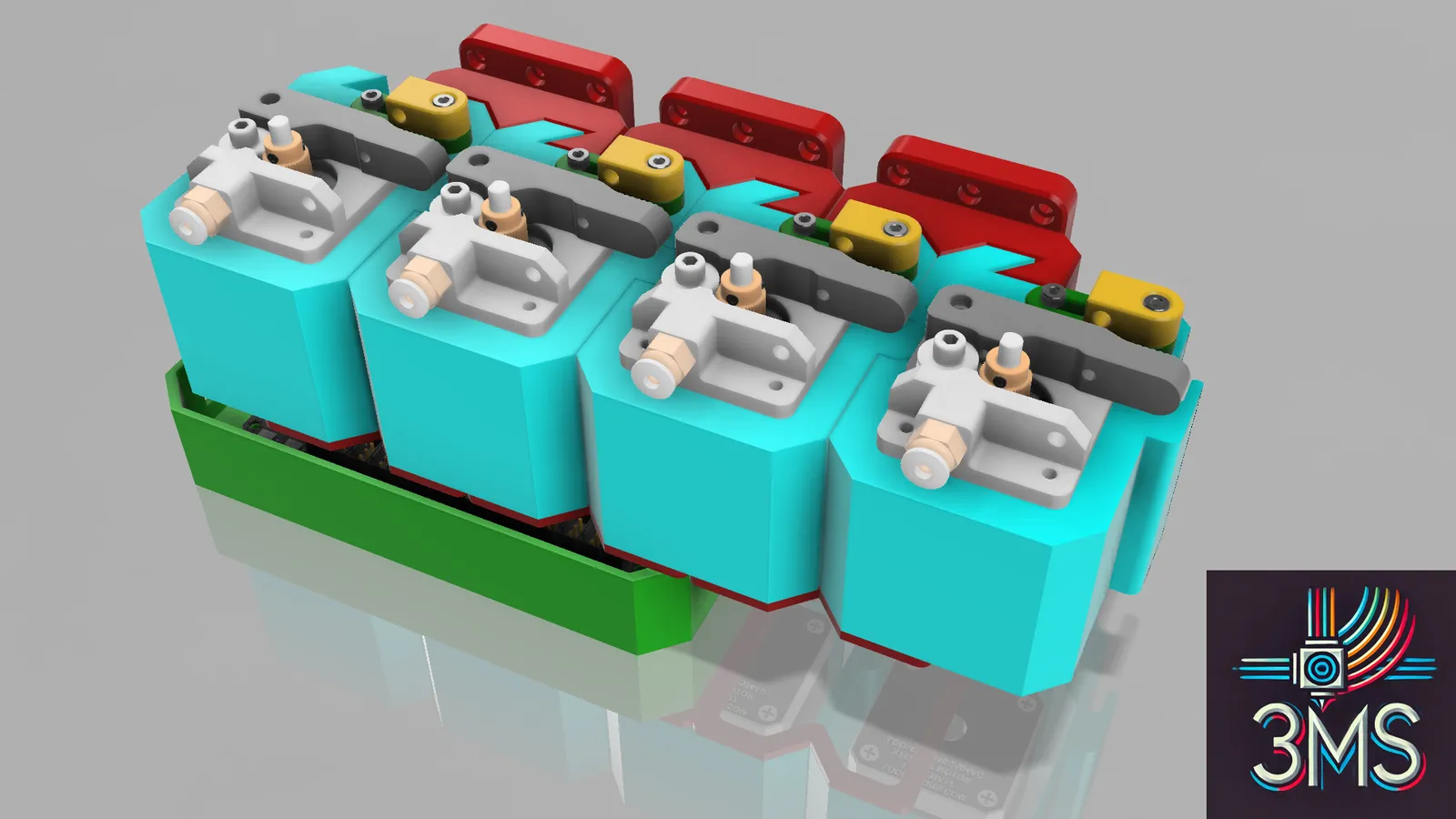Welcome to the 3MS Documentation
The 3MS is short for MMMS, which stands for Modular Multi Material System
The 3MS is a simple, compact, modular, reliable, budget-friendly multimaterial system.
Why 3MS?
Why use the 3MS when there are many other multi-material systems?
Here are a few reasons:
- Simplified Design: Minimal mechanical complexity for increased reliability.
- Low Cost: A 4-filament-unit 3MS can be built for ~$150 USD
- Easily Sourceable: All the parts for the 3MS are available on Amazon.
- Comprehensive Documentation: Step-by-step guides to ensure smooth setup and operation.
- Scalable: Easily expand the system to handle any number of filaments.
Requirements
To use the 3MS, your setup has to meet the following requirements:
- Run Klipper firmware
- Have SSH (PuTTY) access (99.9% of Klipper installations have this, and if you don't you really should setup SSH)
- Have one spare USB port
- Have an adapter to install a PTFE tube to the inlet of your printer's extruder.
Get Started
To get started with the 3MS, see the Master Instructions.
Sample Prints
Model: Sheep by Cipis
West3D Video Series
Thank you to Allen Rowand from West3D for making this ongoing series on the 3MS.






